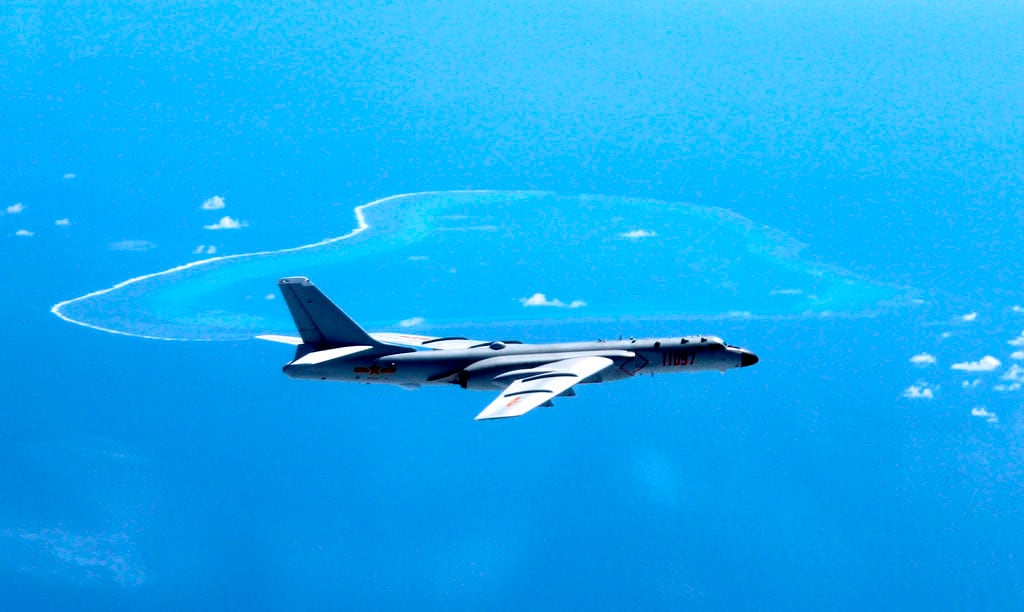SEOUL — The South Korean Navy is taking steps toward developing an ocean-going force, but it’s defense companies a continent over that are largely supporting the Navy’s arms buildup efforts.
The service has selected the British firm Rolls-Royce for its MT30 marine gas turbine to power a new class of six FFX-III frigates to be deployed in the mid-2020s.
The contract is the second of its kind since it chose the MT30, a derivative of the Rolls-Royce Trent 800 aero engine, in 2012 to power its Daegu-class frigates under the FFX-II program, aimed at commissioning up to eight 2,800-ton vessels armed with advanced naval warfare systems.
The lead ship of the Daegu class recently entered service with three other hulls under construction. The 3,000-ton FFX-III batch is under exploratory development.
“The next-generation frigates of the FFX-II and FFX-III feature stealthy design and higher performances with a broader operational range,” said Bang Geuk-cheol, a secretary with the warship programs department of the Defence Acquisition Program Administration. “In particular, the new frigates will have far better survivability with the help of a quiet hybrid propulsion system to conduct more effective anti-submarine operations. The warships will play a pivotal role in defending the waters surrounding the Korean Peninsula.”
Weighing 6,500 kilograms, or about 14,330 pounds, the MT30 is known to offer a maximum power rating between 36 megawatts and 40 megawatts. The FFX-II batch is fitted with a single MT30 and four diesel generators to provide quiet operations and increased fuel efficiency. The ship normally is electrically propelled but is able to operate at full speed using the MT30 turbine.
RELATED

“The increased demand for power by the world’s navies is a clear trend,” Jay Lee, Rolls-Royce’s vice president of customer and government relations for Korea and Taiwan, told Defense News on Oct. 11 during a naval weapons exhibition. The event took place alongside an international fleet review off the coast of South Korea’s southern resort island of Jeju.
“This modern gas turbine offers enormous benefits of thorough life-power retention with ultralow onboard maintenance requirements,” Lee added. “It’s also the world’s most power dense marine gas turbine in service today, providing high power in minimum space.”
Ahn Seung-beom, a military analyst specializing in South Korean military weapons systems, anticipated the allied warships powered by the hybrid propulsion system would enhance the effectiveness of their joint operations in the Asia-Pacific region.

“The back-to-back selection by the South Korean and Japanese navies of the MT30 for their new warships clearly shows the global trends of naval buildups, and it also has implications for the allied security posture in the Pacific region,” he said. “Despite initial glitches of the MT30, the allied naval forces of the United States, South Korea and Japan are going forward with the next-generation propulsion system, and their joint operations and integrated logistics support would likely be more effective and efficient against their potential threats in the region.”
In May, the MT30 was chosen to power a new class of frigates for the Japan Maritime Self-Defense Force, becoming the fifth nation to select the Rolls-Royce gas turbine. The U.S. Navy also uses the MT30 for its Freedom-class variant of the littoral combat ship and the Zumwalt-class destroyer. Other MT30 customers are the navies of the United Kingdom, Italy and Australia.
South Korea’s KDDX “mini-Aegis” destroyers, to be deployed in the late-2020s, are also expected to be powered by the MT30 for operational effectiveness, according to a South Korean Navy source.
Equipped with the Lockheed Martin AN/SPY-1 radar system, the ship is to be fitted with a multifunction digital multi-beam radar, a derivative of the family of Integrated Masts, produced by French firm Thales.
European naval helicopters also have the upper hand in the South Korean Navy’s ongoing procurement programs.
Italy’s Leonardo was the winner of South Korea’s first batch of eight maritime operations helicopters and is expected to clinch a second batch of 12 more units.
According to the Defence Acquisition Program Administration, Leonardo was the sole bidder. The company submitted its proposal for the new anti-submarine helicopters before its competitors; Lockheed Martin and Airbus didn’t submit their proposals until the Sept. 28 deadline. According to multiple industry sources, Lockheed Martin and Airbus dropped their bids due to the program’s low budget scale of some $880 million.
“With operational support costs being added, the AW159 is the only candidate within the budget,” said Kim Dae-young, a senior analyst with the Korea Research Institute for National Strategy. “Without any budget increase, it’s almost certain Leonardo will win the additional order of 12 more AW159s.”
Email: jeff@defensenews.com
Jeff Jeong was the South Korea correspondent for Defense News.








